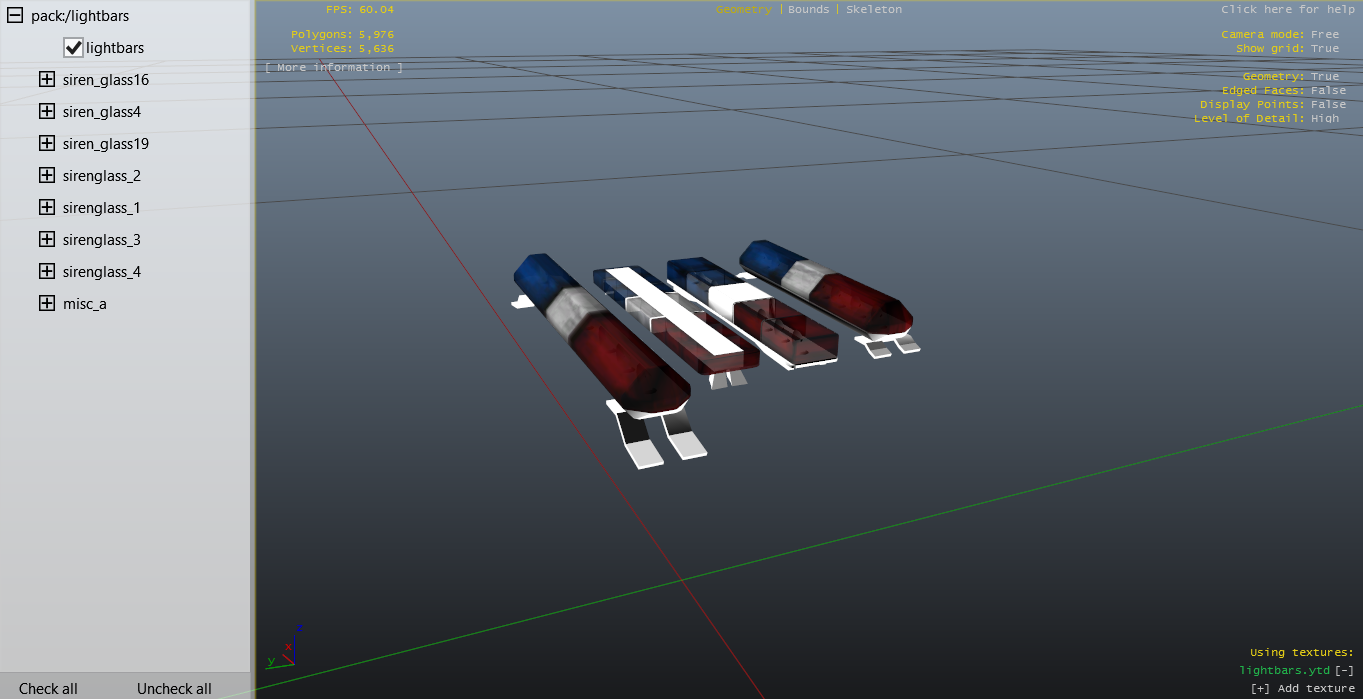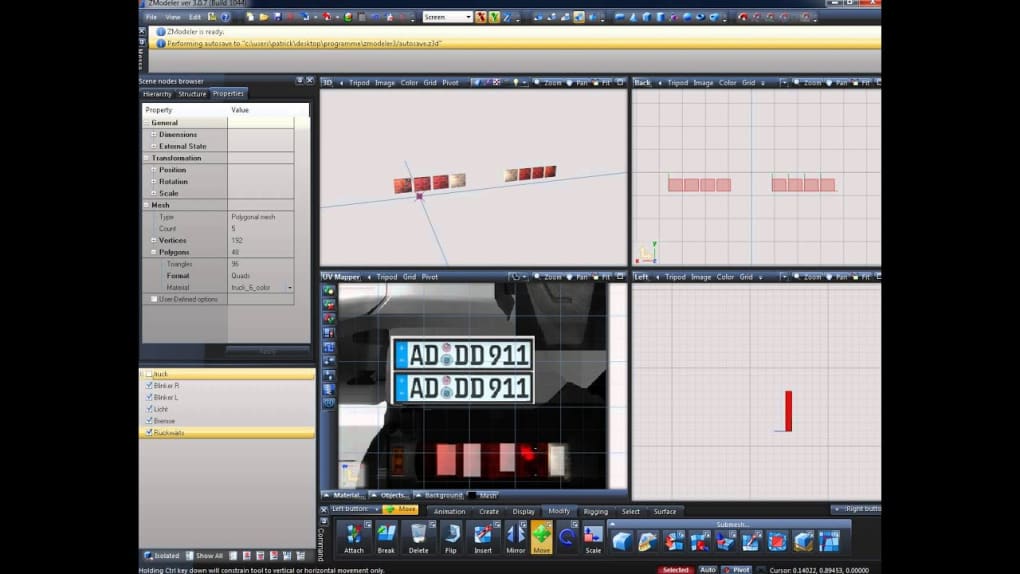

There are some basic rules that apply during export.ġ. The game log refers to missing materials located in pretty strange folders. Thus, for example, you specify, and ZModeler could export material as df.over if certain options are toggled or it could export as .mult when other options are selected. Note, you specify only a shader name, while shader options are evaluated based on material settings. In order to export proper SCS material, specify target shader name in "Adaptation" field of material tile next to "Adapt" label. Once shader is assigned (each shader comes with pre-defined set of texture slots), respective texture rollup pages will become available in material properties window. You can pick desired shader in Shaders list on the left and double-click on it to assign to selected materials. By default, a plain "Color" shader is assigned.

Select a material and double-click on "Shader material" on the left. In order to use textures, material have to be converted to "Shader material". Once you press "New material" in materials browser, a blank new material is created.
#Zmodeler 3 for free how to#
Q: How to create new material and assign textures? These states and material configurations will be respected on export. ZModeler will change texture(s) on affected materials as soon as you press respective state buttons. Then toggle another paint variant, "overload" material sampler and specify texture to use. Toggle it on, and specify texture to use for current state. The only option available there will be "Overload sampler for current material state". When certain paint look button is toggled on structure tab, and respective paint look is listed in material "Scene states", the rollup page "DETAIL" (or any other texture page) on material will become blank. You can toggle "Look2" paint variant and "Add current" on it too. The "Look1" state will be listed in "Scene states" page of material. Look1 button is pressed), you will see it in the bottom of this page. If you have any look variant enabled (e.g. In order to customize material for multiple looks, open material properties in materials browser. Once new paint variant is created, you can pick it in drop-down combo and push the button to enable it. Specify a name for the look variant, toggle "Affect materials" and "Exclusive" options.

You can create new paint look by pressing "New State" button. Since only one look at a time could be shown, these are packed into single drop-down combo. These are available in "Custom scene states" section too. Q: How to create a paint look (company look)? Each volume there could be compound (visible or active for specific variants only). You can do the same with collision volumes listed in "collision" branch of hierarchy. So it will do in game - when any of these variants is selected, respective model group will become visible. The object will become bold again, and this group will only be visible when you press chs_6x2 or chs_6x4 state buttons. "chs_6x2" and "chs_6x4" for the 6 wheel rear part of chassis) and press "Convert to compound". Press all visibility variants for this group (e.g. The group will no longer display as bold and any object within this group will be always visible. To remove variants, press "Dismiss" button. Only one entry is allowed there for ETS, so if you wish to add some variant into "visible" set of variants, you have to get rid of current and then add new variants set. Once you click on such a node, you can see a variants combination in a list. On imported models most of group nodes are bold, meaning they have "variants assigned". The group is a dummy node directly linked into model root node. Once new variant created, you can assign it to a visibility group. Specify a name for the variant, toggle "Affect geometry" and "One of variative" options.

You can create new variant by pressing "New State" button. Model variants are available on Structure page in "Custom scene states" section. Watch on YouTube Q: How to create a model variant?


 0 kommentar(er)
0 kommentar(er)
